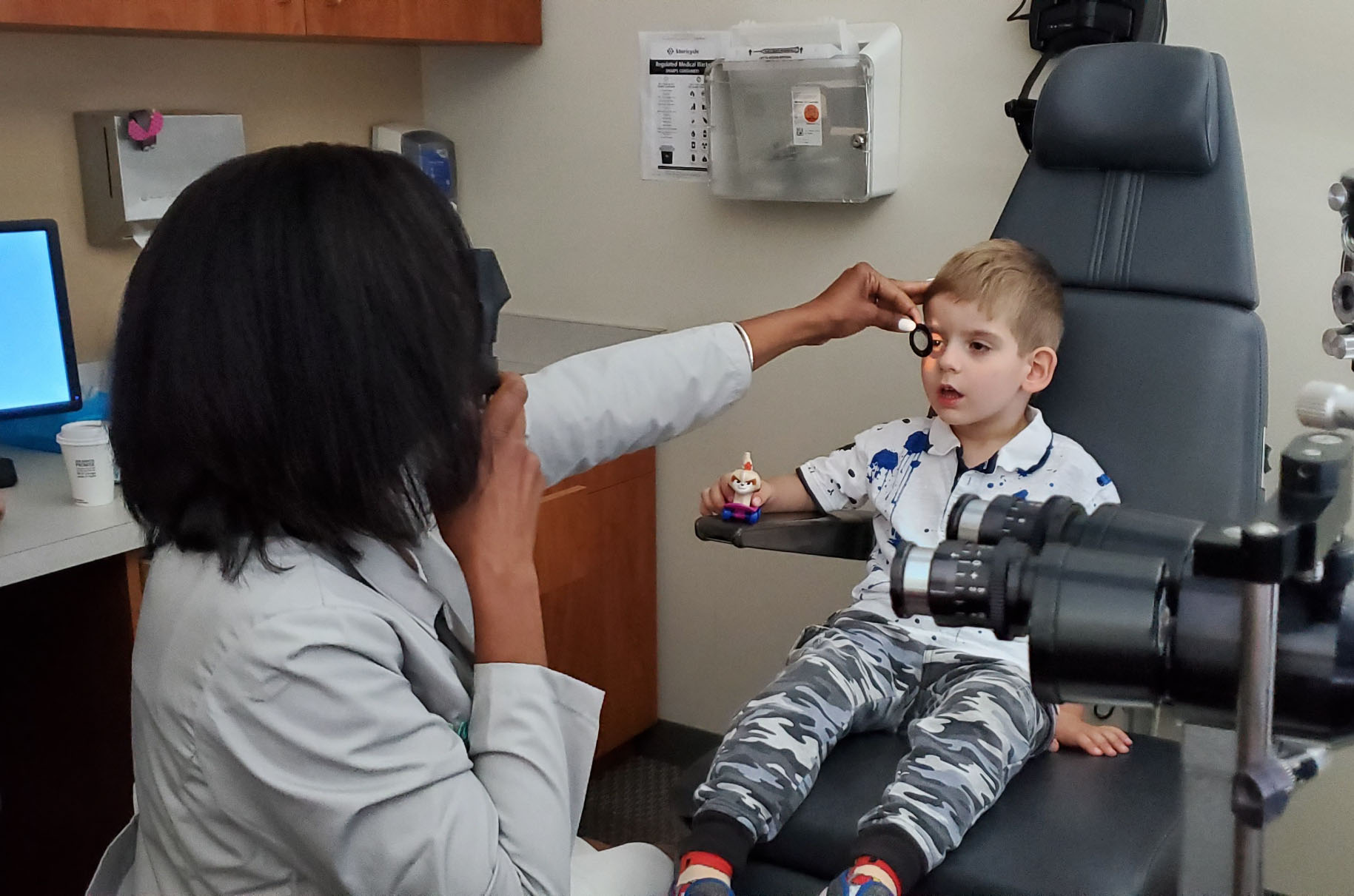Back to School: How to Prepare for a visit to the Ophthalmologist


A visit to the ophthalmologist is highly probable in the life of a child with special needs. Catherine was diagnosed with nystagmus right after birth. Her eyesmade involuntary, repetitive side to side movements. She visited a local pediatric ophthalmologist at a very young age to address this issue. During this challenge, I benefited from the advice of my best friend, Dr. Cereesa Longest, a pediatric ophthalmologist in Hoffman Estates, Illinois. With approximately 27 years of experience as an adult and pediatric ophthalmologist, her valuable advice is sure to get you through your next visit to an eye care specialist.
Before the Exam
1. Check with your insurance to understand your coverage and cost of services.
2. On the day before the visit, write out a short list of your eye concerns, medical diagnosis, surgical history and list of current medications. A handy place to keep this list is in the notes section of your cell phone.
3. Allow at least 2 to 3 hours for a pediatric ophthalmology exam. It is not a short exam!
4. Avoid scheduling multiple appointments on the same day if possible, especially if this your child’s first eye exam. Consider scheduling your day where this is the only appointment for the morning or afternoon.
5. Prepare your child for the visit by having a brief conversation days ahead of the appointment. Mention all of the new, exciting and fun “toys” (instruments) they will see the eye doctor use. Be sure to mention that the ophthalmologist’s office is a “no shots allowed” office!
6. Check out the American Academy of Pediatric Ophthalmology and Strabismus (AAPOS) website for helpful information about the pediatric eye. https://aapos.org/home
7. Inform the front office of any special disability as it relates to your child’s diagnosis. This is helpful to the physician and office staff as they prepare for the visit.
During the Exam
1. Expect the pupils to be dilated with 1-3 different eye drops for initial exams. This will widen the pupils to see if glasses are needed (refraction) and allow for adequate visualization of the retinas.
2. Bring a “bag of goodies” (favorite book, sippy cup, stuffed animal, toy or iPad) to entertain your child. There is a 30-40 minute wait after the eye drops are instilled.
3. Have a “snack pack”. Cheerios, goldfish, pretzels, fruit slices, etc.
After the Exam
1. Rethink planning a trip to the park or outdoors on sunny days after a dilated eye exam because the eyes may be extra sensitive to the bright sunlight for 2-24 hours after dilation.
2. Bring a hat and/or sunglasses to shield the eyes from the sun. If you have an infant or toddler, don’t forget extra bottles to comfort them.
The visit to the pediatric ophthalmologist can be a great experience for the child and the parents. Remember, ophthalmologists are accustomed to conducting eye exams on patients of all ages and medical backgrounds Relax in knowing your child’s ophthalmologist and staff will provide the best eye care experience for your child while obtaining the information needed. I am sure these tips will go a long way in making your next visit a success as they did for Catherine.
share this post: